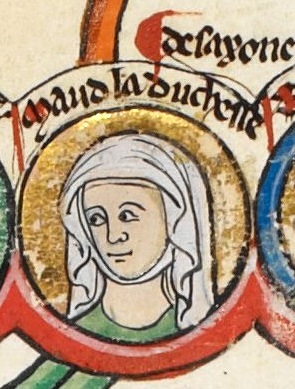 |
| By See Li via Wikimedia Commons |
For my perspective on possible names for Cambridge Baby #1 from before he was born, check out my post, What Will Kate Name the Baby?
First things first, the name of the new baby is not as dynastically important as the name of the Cambridge's first child. After all, Prince George of Cambridge is expected to be king some day so it is entirely possible that only the names of former monarchs were even considered for him. His full name is George Alexander Louis. George is the name of six British kings (including The Queen's beloved father and grandfather). Alexander is the name three Scottish kings, and Catherine and William did meet in Scotland. It could also be a tribute to one of William's godmothers, The Queen's cousin Princess Alexandra. Louis is the name of The Duke of Edinburgh's favorite uncle Earl Mountbatten of Burma, whom The Prince of Wales called his "honorary grandfather." Louis is also among William's four names.
However, this doesn't mean that all bets are off with this "less important" baby. William and Catherine are still fairly conservative people, so they are not likely to choose unusual names or hipster names and don't expect a Prince Middleton of Cambridge. While they may not select a regnal name, they will likely choose a notably royal name with some family connections. I do suspect that this baby could end up with just two names and that at least one of its names will be a clear tribute to Kate's side of the family. After all, the Cambridges spend quite a bit of time with the Middletons. Don't be surprised to see some variation of Carole or Michael in honor of the maternal grandparents.
 |
Victoria ordered that all her
her or her husband Albert.descendants be named for
By Alexander Passano via
Wikimedia Commons
|
Since Queen Victoria, British princes have carried the names Albert, Edward, Alfred, Arthur, Leopold, Victor, George (already taken by big brother), Alexander, John, Charles, Henry, William, Richard, Michael, Andrew, Edward, Henry (uncle Prince Harry), and James.
Their choice of George may indicate a penchant for less contemporary names. Also, all of these names are currently in use by members of the BRF except Victor and Alfred. Could these two characteristics make them front runners?
We could also see a tribute to William's grandfather Prince Philip or his own godfathers: King Constantine of Greece, Norton Lord Romsey and Sir Laurens van der Post.
I'm still liking Scottish tributes, which could add Robert and David to the list as appropriate royal names. (I'm a descendant of the Bruces so these are my faves. LOL)
 |
| Elizabeth would honor The Queen Mother, The Queen, Catherine and her mother. By Richard Stone via Wikimedia Commons |
Going back to Queen Victoria again, British princesses have been named Victoria, Alice, Helena, Louise, Beatrice, Marie, Melita, Alexandra, Patricia, Margaret, Alice, Maud, Elizabeth, Anne and Eugenie.
Most of these names are not currently in use in the BRF, so perhaps Alice (Prince Philip's mother), Louise, Marie, or Maud could make the cut. Melita and Patricia would be longer shots. The choice of either Margaret or Elizabeth could be sentimental favorites. Margaret for The Queen's sister and for its ties to historic Scottish queens. Elizabeth for The Queen and her own mother, William's beloved great granny, The Queen Mother.
For a girl, tributes to William's godmothers could include Alexandra (for Princess Alexandra), Susan (for Lady Susan Hussey) and Natalia (for the Duchess of Westminster.
Almost the entire world, I think, is longing for a baby named Diana in honor of William's mother. I don't like the idea of hanging that legacy on a little girl but I also thought Diana's engagement ring had bad juju, but William didn't ask me for my input on that one either. Nevertheless, they could opt for a tribute to Diana's Spencer relations with Frances for his gran and Jane or Sarah for his aunts. (Although since Sarah is also the name of the controversial Sarah Duchess of York, I think they'll steer clear of that.)
In addition to Carol, the baby's maternal family could also yield the tribute names of Catherine, Philippa, Elizabeth and Dorothy. Beyond its regal connections, Elizabeth is also the middle name of both Kate and her mother. Kate's own nan Dorothy could be honored with Dorothea, which was a fairly common name among the Georgian princesses of Britain.
MY PREDICTIONS
Don't bet money on these! (But if you do AND you win anything please contact me to share the spoils!!)
For a boy, Philip Michael Charles or Robert Andrew Michael.
For a girl, Alice Carole Elizabeth or Margaret Alexandra Elizabeth.






.jpg)











